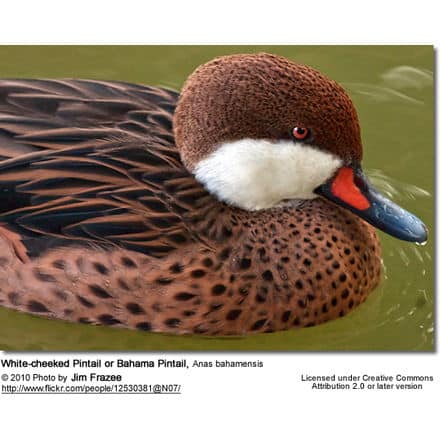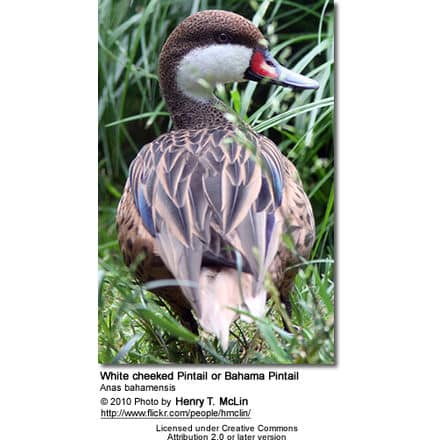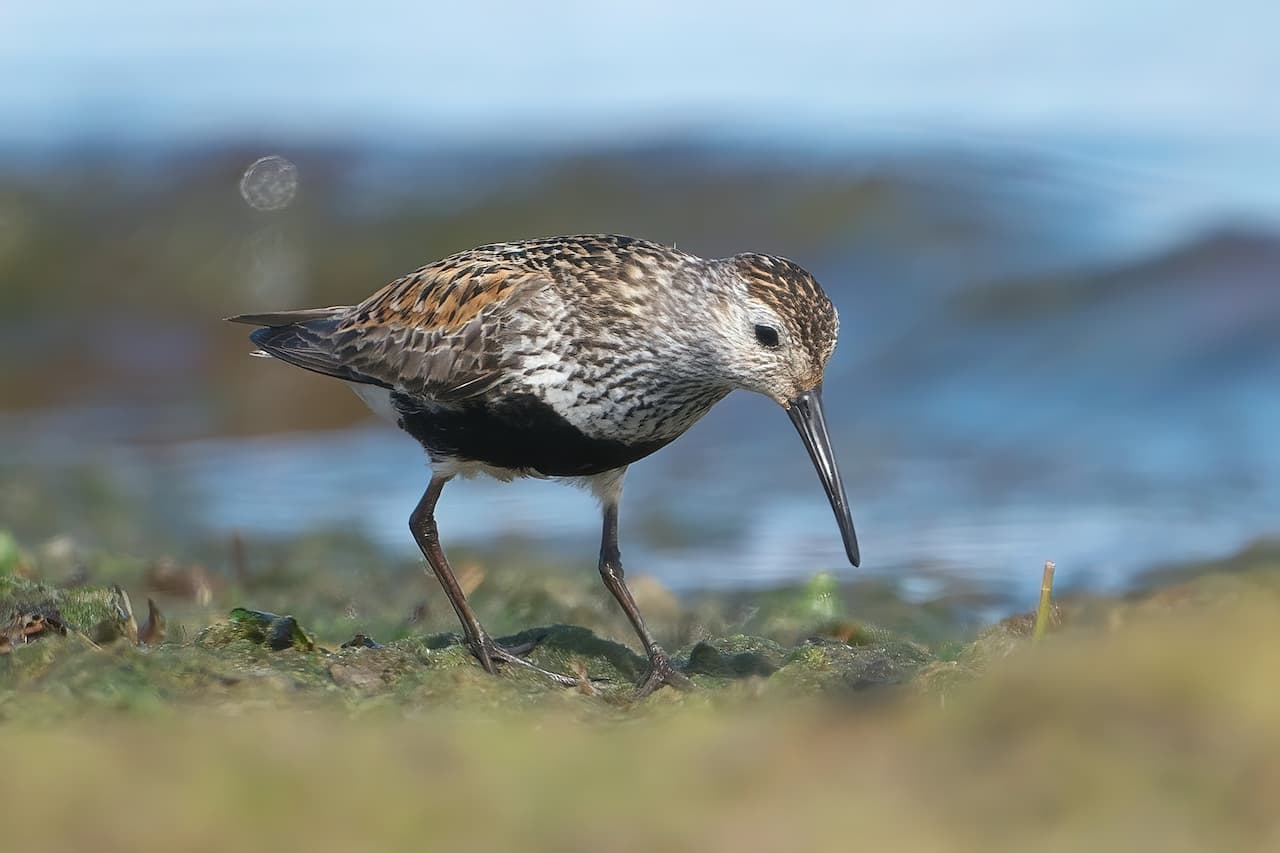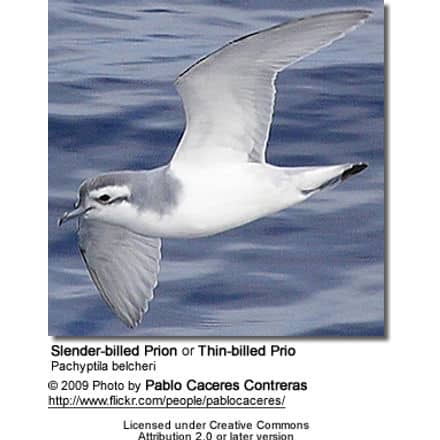White Cheeked Pintails (Anas bahamensis)
The White cheeked Pintails or Bahama Pintail (Anas bahamensis) is a dabbling duck of the Caribbean, South America and the Galápagos Islands.
This species occurs in waters with a degree of salinity, such as brackish lakes, estuaries, and mangrove swamps.

There are three races:
- A. b. bahamensis in the Caribbean,
- A. b. galapagensis on the Galapagos,
- and the slightly larger A. b. rubirostris in South America. The latter race may be partially migratory, breeding in Argentina and wintering further north.
Description:
Like many southern ducks, males and females look alike. It is mainly brown with white cheeks and a red-based grey bill (young birds lack the pink). It cannot be confused with any other duck in its range.
Nesting:
The nest is on the ground under vegetation and near water.
Diet / Feeding
The White-cheeked Pintail feeds on aquatic plants and small creatures obtained by dabbling.

Diet / Feeding:
The White-cheeked Pintails feed on aquatic plants and small creatures obtained by dabbling.
Ducks generally feed on larvae and pupae usually found under rocks, aquatic animals, plant material, seeds, small fish, snails, and crabs.
Feeding Ducks …
We all enjoy ducks and many of us offer them food to encourage them to come over and stay around – and it works! Who doesn’t like an easy meal?
However, the foods that we traditionally feed them at local ponds are utterly unsuitable for them and are likely to cause health problems down the road. Also, there may be local laws against feeding this species of bird – so it’s best to check on that rather than facing consequences at a later stage.
- Foods that can be fed to Ducks, Geese, and Swans to survive cold winters and remain healthy when food is scarce in their environment.
Please note that feeding ducks and geese makes them dependent on humans for food, which can result in starvation and possibly death when those feedings stop. If you decide to feed them, please limit the quantity to make sure that they maintain their natural ability to forage for food themselves – providing, of course, that natural food sources are available.




